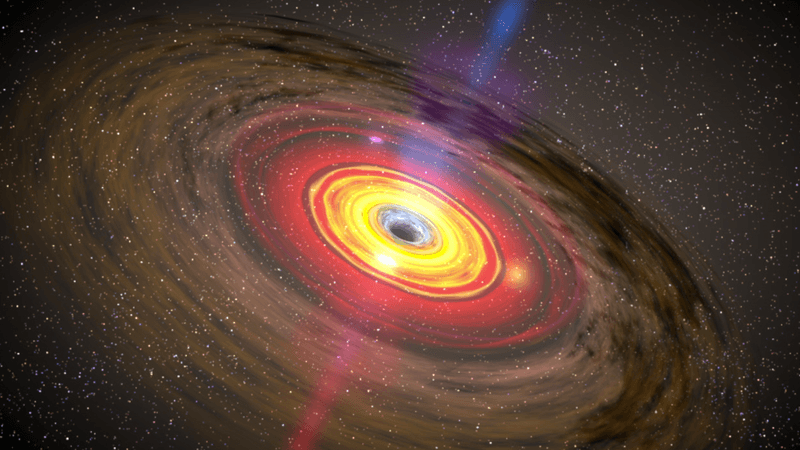Bright, active regions on the sun have combined to look something like Jack Skellington's face on October 8. These spooky facial features are areas that emit more light and energy -- the markers of intense magnetic activity hovering in the sun’s atmosphere, or the corona.
When we look at the sun in standard camera photos or with the naked eye (not recommended), we typically see a yellowish disk; sometimes it looks reddish if it’s near the horizon. The sun actually emits light in all colors, but since yellow is the brightest, that’s what we see. Ground and space-based telescopes can observe light in many different wavelengths far beyond the ranges visible to us. Starting from the sun’s surface on out, the wavelengths observed by NASA’s Solar Dynamics Observatory (SDO) range from 4500 to 131 angstroms -- from the surface (or photosphere) all the way to the hottest material in a flare.
The ghostly grin pictured above is a composite that blends together images captured by SDO of two sets of wavelengths at 171 and 193 angstroms, which are typically colored as gold and yellow. A wavelength of 171 angstroms shows the corona when it’s quiet, as well as giant magnetic arcs called coronal loops. A wavelength of 193 shows a slighter hotter region of the corona and much hotter material of a solar flare. You can see the individual images here.
Below, the sun is imaged on the same day in 304 angstrom extreme ultraviolet light. Light at this wavelength is emitted from a layer of the sun’s atmosphere called the chromosphere (just above the photosphere) and the transition region where the temperature rapidly rises:

And here again in 335 angstrom extreme ultraviolet light. This wavelength shows hotter, magnetically active regions in the corona:

Images: NASA/GSFC/SDO (top), NASA/SDO (middle, bottom) via NASA's Goddard Space Flight Center




